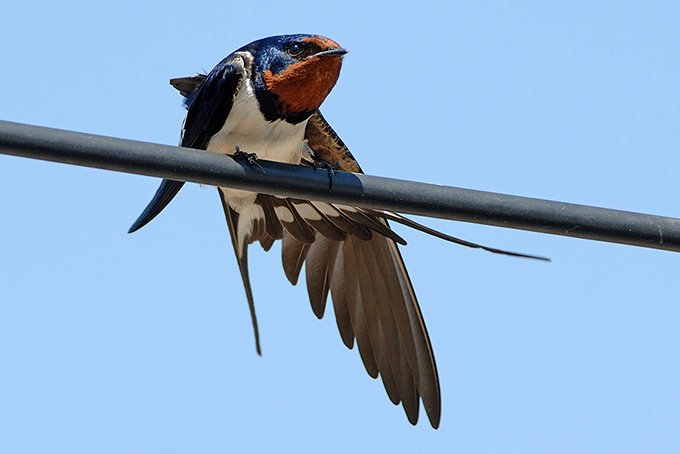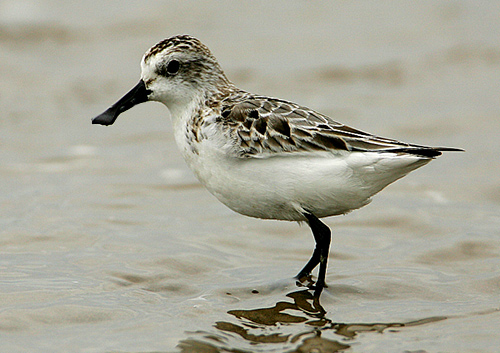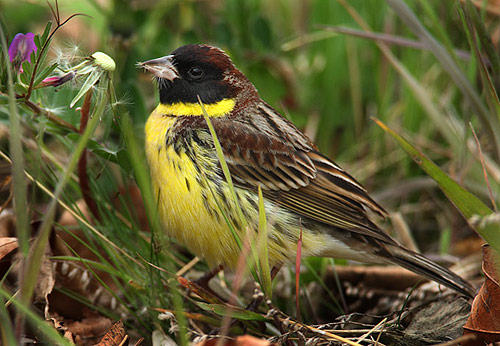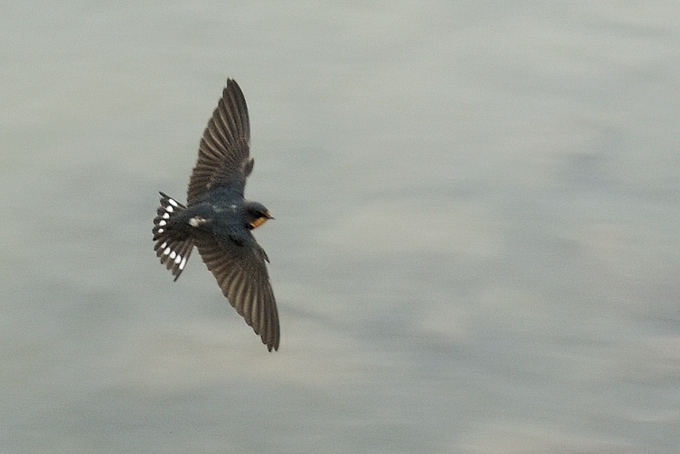
Biodiversity is “the source of the essential goods and ecological services that constitute the source of life for all” (http://www.cbd.int/ibd/2004/). Biodiversity is the web of life of which we all are a part. Biodiversity is what we eat, and it is biodiversity, in the form of the world’s vegetation, that creates and maintains the atmosphere that we and many other species need to breathe.
Without this diversity of species and ecosystems, our own species would no longer exist.
In recognition of this, the United Nations designated May 22nd each year as World Biodiversity Day. Further, with the agreement of its 192 member nations, the United Nations has also made explicit the conservation of biodiversity within their Millennium Development Goals - inter-related Goals adopted in 2000 that are at the core of achieving Sustainable Development.
Along with essential Goals on (for example) poverty reduction, disease eradication and gender equality, is Millennium Development Goal 7, “To Ensure Environmental Sustainability”. This Goal, broad in content, also contains a clear Target and deadline - “Reduce biodiversity loss, achieving, by 2010, a significant reduction in the rate of loss”.
It is the responsibility of all of us to see that this Target is met. Our future depends on it.
As many bird species are valuable bio-indicators of the most diverse and productive ecosystems, conserving birds and their habitats is one immediate way in which we can reduce the rates of biodiversity loss: for the benefit of birds, and people.
However, despite the great efforts of many, the rate of biodiversity loss - of birds and other species - is not yet being reduced. Rather the rate of loss is increasing.

Photo © Kim Shin-hwan
Many of the causes are already understood. In 2006 for example, the Saemangeum sea-wall was closed, killing off huge shellfish beds and causing a more than 20% decline in the global population of the shellfish-eating Great Knot Calidris tenuirostris. These declines seem set to continue. We have also seen further reclamations, both large and small, that have also resulted in declines in other shorebird species, including the Near-threatened Black-tailed Godwit Limosa limosa and the now Critically Endangered Spoon-billed Sandpiper Eurynorhynchus pygmeus. Declines in shorebirds like these indicate declines in other tidal-flat species, some of which, including shellfish and fish, are consumed by people. Tidal-flat reclamation causes biodiversity loss as well as lessening food security and causing economic hardship for dependent communities. It negates the United Nations’ vision of Sustainable Development. Despite this, March 2009 saw approval given for yet another large-scale reclamation: the internationally important Song Do tidal-flat in Incheon.
In 2008 and 2009 too, many of our major rivers have also been targeted for dredging and damming - major development that also obviously threatens much of the rivers’ avian biodiversity, including the Mandarin Duck Aix galericulata (still a National Natural Monument) and the globally Endangered Scaly-sided Merganser Mergus squamatus, as well as all the other river-species on which these two species feed.
In common with many others in Korea and around the world, Birds Korea is committed to doing all that we can to raise awareness, and to prove with science that unsustainable development of this kind is leading to an increasing rate of extinction and declines in once-common species. Unsustainable development, dependent on concrete and focussed on short-term economic gain, undermines the conservation successes that are being achieved, and diminishes the natural resource base needed by the next and subsequent generations for life.
At the global level, BirdLife International announced in May that 1,227 bird species (or 12 percent of the total) are now classified as threatened with extinction. This is more than at any previous time in human history. In the words of Dr. Simon Stuart (Chair of the IUCN’s Species Survival Commission): “It is extremely worrying that the number of Critically Endangered birds on the IUCN Red List continues to increase, despite successful conservation initiatives around the world.” http://www.iucn.org/?3159/More-Critically-Endangered-birds-on-IUCN-Red-List-than-ever).
Moreover, a growing body of data confirms that there are also rapid declines taking place in many other commoner bird species, the potentially threatened species of the future.

Photo © Dr. Robin Newlin
Many of our members, for example, have already noticed the decline in Korea of the Barn Swallow Hirundo rustica. The decline in this beautiful bird is not only anecdote: it is real. According to the National Institute of Biological Resources the Barn Swallow has declined more than 30% at their study site since 2000. This mainland survey is further supported by Birds Korea data gathered on Barn Swallows migrating across the Yellow Sea, especially on Gageo Island in the far southwest. The highest day-counts of Barn Swallow recorded in late April and early May on Gageo Island were 350 in 2000, 1200 in 2001 and only 170 in 2009. In addition, the Asian House Martin Delichon dasypus (peak day counts of 100 in 2000, 75 in 2001 and only six in 2009), and the Yellow-breasted Bunting Emberiza aureola (with a peak day count of 60 in spring 2000 and a peak of only six there in spring 2009) are two more of several species that appear to be much reduced in number now when compared to 2000, the year in which the Millennium Development Goals were first agreed to. It is noteworthy that the once-abundant Yellow-breasted Bunting has recently been classified by BirdLife/IUCN as globally Vulnerable. This follows two decades or more of rapid decline across its vast range, caused largely by trapping of the birds for food, especially in China.
Data on the populations of many other common and familiar bird species are lacking. Much greater survey and conservation effort will be required in the coming years, both on offshore islands where migrants are concentrated and also on the mainland where they breed, in order to detect, to measure and then to reduce the rates of their decline.
International cooperation will be essential too, as more than 90% of Korean bird species (like the Barn Swallow) are migratory. Their declines could be caused by local factors in Korea, by problems in wintering areas (as in the Yellow-breasted Bunting), by human-induced climate change, or by a combination of factors throughout their ranges.
Birds Korea believes that conservation of birds and other biodiversity is an essential component of Sustainable Development. We support and value the United Nations’ vision and direction, and we share the belief that working for conservation of biodiversity is an effective way to build the Global Partnership also called for in the Millennium Development Goals.
Biodiversity conservation depends on good data, good analysis, and the right ways to share the information with others. In addition to our shorebird monitoring, we are now working on developing methods to analyse data on migrant birds, to enable a more useful comparison of counts between years. We are also discussing ways in which we can help the development of a more popular common bird monitoring program, one involving local communities and school children.
We need your support if we are to be successful in this valuable and increasingly urgent work. We need volunteers who can count Barn Swallows in their local area, or who can help with creating education materials, or who can help us in any of 100 equally-important ways.
Helping us to help the birds means - helping to make a better future for all of us. Please contact us and let us know how you would like to help!




